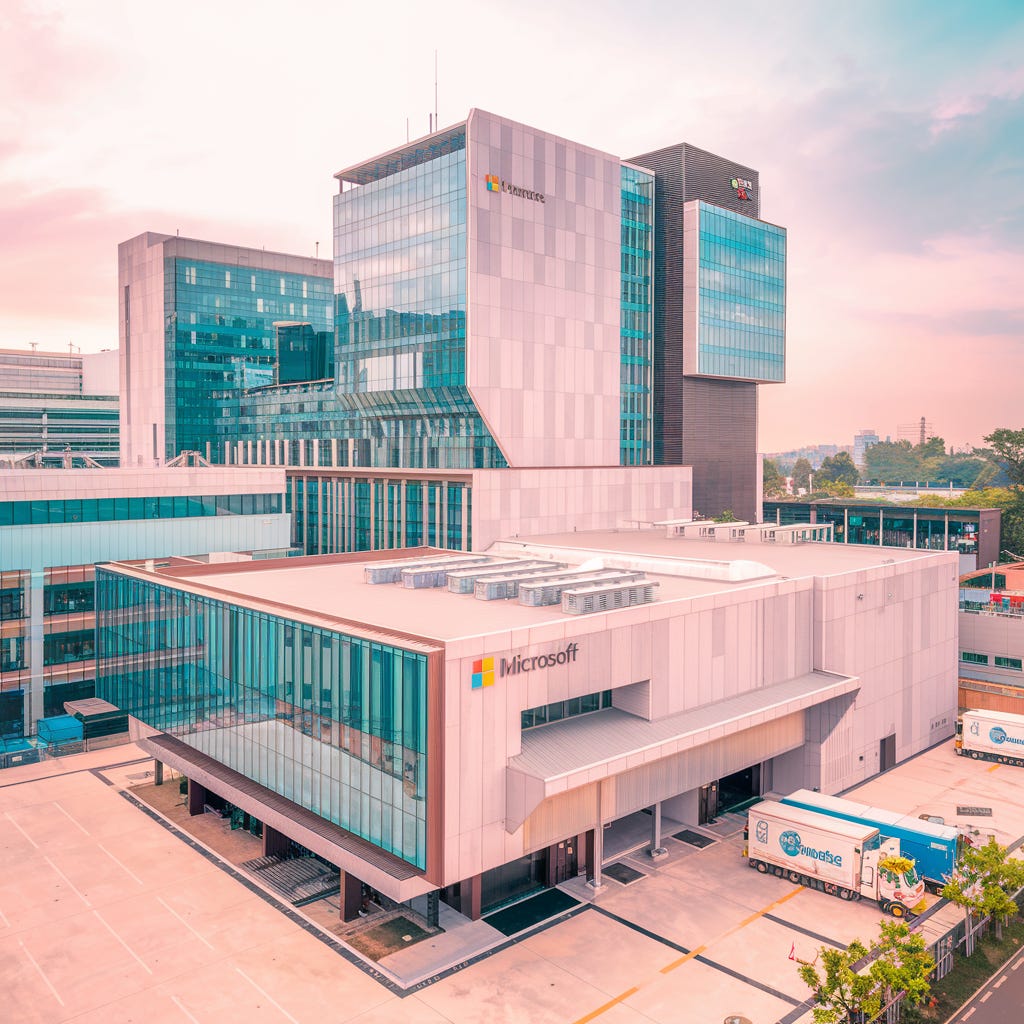Scaling Smart: Why Microsoft’s AI Infrastructure Recalibration Signals a New Phase
Microsoft just made one of the most consequential strategic adjustments in AI infrastructure to date.
You received this email because you subscribed to Global Data Center Hub, a newsletter about the global data center sector.
Thank you very much for supporting my newsletter this month. Your readership encourages me to provide these insights, and I’m truly grateful for it.
We publish new insights seven days a week, helping you stay ahead of the most important shifts in data centers, AI infrastructure, and global connectivity.
Our premium insights are reserved for paid subscribers.
If you haven’t upgraded yet, now’s a great time:
👉 Subscribe and join hundreds of readers of “Global Data Center Hub” with a 20% discount on the annual plan: Subscribe here
The company has paused or deferred up to 2 gigawatts of data center projects across the U.S. and Europe.
That’s not a signal of retreat.
It’s a signal of maturity.
And it tells us something critical:
The AI infrastructure cycle is entering a new phase—
One defined not by hype or speed,
But by disciplined deployment and dynamic demand alignment.
Why Microsoft Rebalanced—and What It Signals
This isn’t about walking away from AI infrastructure.
It’s about building smarter, not faster.
Let’s break down the drivers of this shift:
1. AI Adoption Is Real—But Uneven
AI is transforming industries—but enterprise adoption is progressing at different speeds.
Some sectors are deep in pilot deployments. Others are still defining use cases and business models.
Microsoft is responding with discipline—aligning infrastructure capacity with clear signals of demand.
This isn’t a slowdown in belief.
It’s a strategic pacing of investment to maximize efficiency and ROI.
2. OpenAI’s Cloud Freedom Changes the Equation
The updated agreement between Microsoft and OpenAI allows the AI leader to run workloads on multiple cloud platforms—not just Azure.
That’s a major shift in how cloud demand is forecasted.
Rather than lock in a single workload profile, Microsoft is evolving its infrastructure strategy to prioritize:
Flexibility across clients
Broader ecosystem integration
Sustained partnerships across the AI stack
It’s a future-proofing move. One that reflects Microsoft’s long-term commitment to being a diversified AI infrastructure provider.
3. AI Models Are Getting Leaner and More Efficient
We’re past the phase where every workload needed massive GPU clusters.
Now?
Smaller language models (SLMs) are outperforming expectations.
Open-source and fine-tuned models are reducing compute intensity.
Quantization and optimization techniques are making inference more efficient than ever.
Microsoft is building for this broader, more agile range of AI workloads—not just massive training runs.
That shift in model architecture is leading to a rethinking of infrastructure footprints, timing, and location.
Strategic Adjustments Across the Ecosystem
Microsoft isn’t the only one moving pieces on the board.
Google is acquiring vacated sites across Europe.
Meta is absorbing U.S. capacity that became available.
Developers and Data Center REITs are reassessing timelines, regions, and tenant strategies.
This isn’t a collapse—it’s a strategic reshuffle.
The early growth era is giving way to Phase Two: the optimization era.
And that reshuffle is rich with opportunity for those positioned to move.
The New Playbook for Stakeholders
Whether you're building, financing, or consuming AI infrastructure, the rules just changed.
For Developers:
Pursue flexible build phases with tenant alignment
Focus on multi-tenant design and differentiated services
Consider power availability, latency zones, and AI-specific fit
For Investors:
Seek out distressed land or power deals in paused markets
Look for teams that can deliver on hybrid and modular infrastructure
Reassess underwriting assumptions—demand curves are bending
For Enterprises:
Now is the time to negotiate better terms
Consider mixing hyperscale, sovereign cloud, and on-prem edge
Match model needs to infrastructure, not the other way around
Microsoft’s $80B Commitment Still Stands
It’s worth repeating:
Microsoft still plans to invest $80 billion in AI infrastructure in 2025.
This is not a pullback.
It’s a shift from speed to strategy.
From volume to value.
From maximum scale to maximum impact.
And it’s a signal that Microsoft is preparing to lead in an AI landscape that’s more complex, more distributed, and more performance-focused than ever before.
Final Thought: The Shift from Hype to Harmony
We’re exiting the “build fast, scale everywhere” phase of AI infrastructure.
And entering a period defined by:
• Purposeful partnerships
• Strategic pacing
• Targeted innovation
Microsoft’s recalibration is a sign of strength.
It shows that even the biggest players are adapting to the evolving terrain.
For investors, operators, and founders—this is the moment to rethink strategy, reprice opportunity, and rebalance with intention.
The next winners in AI infrastructure won’t just scale fast.
They’ll scale smart.
One More Thing
I publish daily on data center investing, AI infrastructure, and the trends reshaping global data center markets.
Join 900+ investors, operators, and innovators getting fresh insights every day and upgrade anytime to unlock premium research trusted by leading investors and developers.

